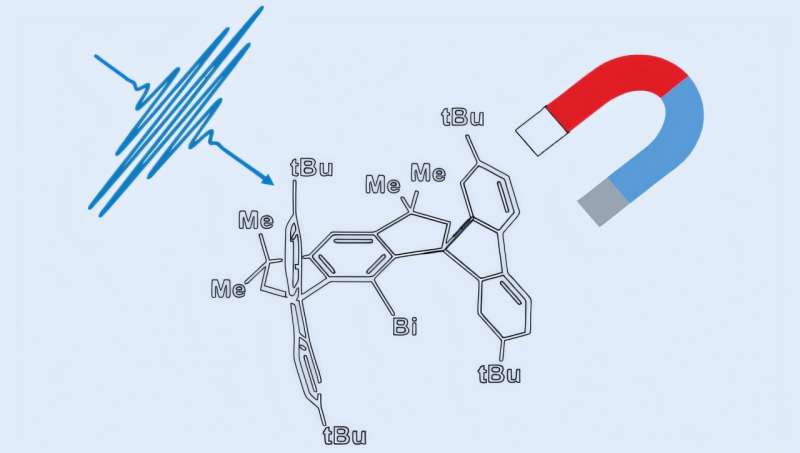
December 23, 2024 by Helmholtz Association of German Research Centres
Collected at: https://phys.org/news/2024-12-synchrotron-largest-magnetic-anisotropy-molecule.html
At the Berlin synchrotron radiation source BESSY II, the largest magnetic anisotropy of a single molecule ever measured experimentally has been determined. The larger a molecule’s anisotropy is, the better suited it is as a molecular nanomagnet. Such nanomagnets have a wide range of potential applications, for example, in energy-efficient data storage.
Researchers from the Max Planck Institute for Kohlenforschung (MPI KOFO), the Joint Lab EPR4Energy of the Max Planck Institute for Chemical Energy Conversion (MPI CEC) and the Helmholtz-Zentrum Berlin were involved in the study.
The research involved a bismuth complex synthesized in the group of Josep Cornella (MPI KOFO). This molecule has unique magnetic properties that a team led by Frank Neese (MPI KOFO) recently predicted in theoretical studies. So far, however, all attempts to measure the magnetic properties of the bismuth complex and thus experimentally confirm the theoretical predictions have failed.

This important step has now been achieved by using THz electron paramagnetic resonance spectroscopy (THz-EPR) at the synchrotron radiation source BESSY II, which is operated by the HZB in Berlin.
“The results show in a fascinating way that our method can be used to determine extremely high values of the magnetic anisotropy with high accuracy. Through our cooperation with scientists from fundamental research, we are thereby making a great step forward in the understanding of this class of materials,” says Tarek Al Said (HZB), first author of the study, which was recently published in the Journal of the American Chemical Society.
More information: Tarek Al Said et al, Direct Determination of a Giant Zero-Field Splitting of 5422 cm–1 in a Triplet Organobismuthinidene by Infrared Electron Paramagnetic Resonance, Journal of the American Chemical Society (2024). DOI: 10.1021/jacs.4c14795
Journal information: Journal of the American Chemical Society

Leave a Reply